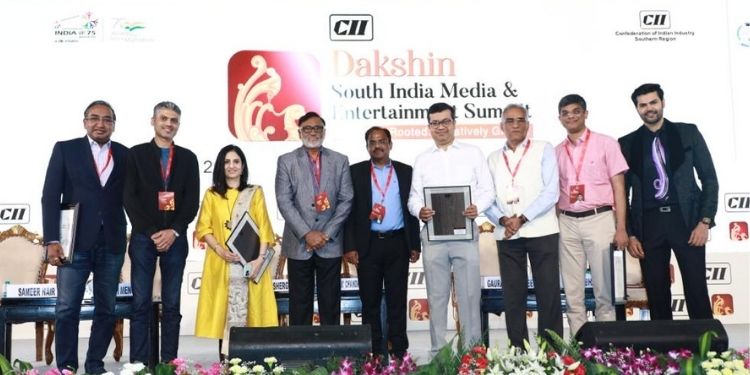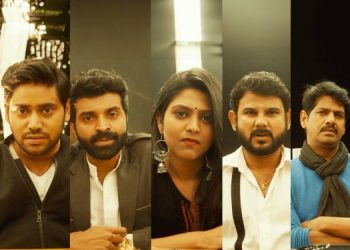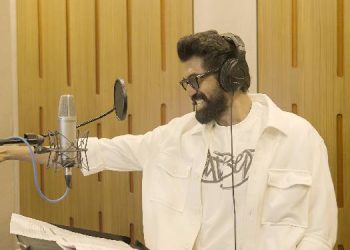This is the part 3 of the discussion which I am actually proud in sharing for the simple reason that it throws light on so many perspectives of the OTT industry and it’s challenges. To travel through the pathways of every platform and reason out the face of every platform was achieved through this dialogue. And here it continues
Anup: Siju, what immediately comes to our mind when we think of Zee5, is those family centred, traditional kind of content. Is it the mirror image of your motherbrand, that you are creating in Zee5 as well?
Siju: Yes, we do have a strong tv legacy, which we are very proud of. As Gaurav was mentioning, this was built brick by brick over the years, and that is an audience which was the first to be tapped. When the OTT structure was evolving where we didn’t have such a strong content ecosystem as we have, while we know films were there always, but that is the legacy that we carry, and that is something which still contributes substantially to our base. Having said that, I think our story telling has evolved, as we heard speakers in the morning talk about the real need of what the viewer wants today is more nuanced story telling, clear narratives, and that requires a very different thing, we are on a path. We have a lot of new shows in the regional market which we have been doing, recently in regional languages, a show called Vilangu which we did and which got a lot of appreciation. We did a show called Oka chinna family story in Telugu, which was good. We are doing a lot of Hindi stuff with Sameer and their team where we’ve done Bloody Brothers, Mithya. So, I think every one of us is trying to get what we do not have. But there is an inherent strength that each one brings of their legacy. To answer the question that you were asking about what does each brand represent, while there is a legacy effect to the brand but you want to create something new, and at the heart of it is still story telling, for each one of us.
Anup: Thankyou Siju. Sameer, now, as far as curating content is concerned, globally 62% of content is inspired by books, 22% is from formats, and 5% from films. Where do we, especially content creators like you, draw your inspiration from? And which genre specifically, is easy to sell to all these platform players?
Sameer: Actually, inspiration comes from many sources. Obviously, books is a source of inspiration. There are format adaptations, you get original ideas. Sometimes you see a short film which you can develop into something else, sometimes you buy the license, sometimes you rip it off, its just called being inspired. So, there are different sources. What happens with that, is that the ideas come from everywhere. But the process of show creation is really that journey of going from idea to screen. And, that is really where the whole challenge lies, because there are lots of good ideas and to take it to that final step, it’s a big process. We spend 18 to 24 months before we can go from an idea to get it on screen. So, it’s a much longer journey and there are different sources. From a point of view of genres, at one level, as we have heard all of them say, the heart of it all is the story. And at the heart of it is also story telling, and it has to appeal to the audience, whether its called mass or niche. Its got to be economic too. It has some driving sources. Sometimes its star driven, sometimes actor driven, sometimes genre driven. But there are some learnings. I would always believe that it is not so much that the content has changed, it is the distribution method that has changed. Because as you see, humour is still the same, evolving though needless to say, we’ve all evolved. What our parents saw and what we see, we have different taste and our kids have a different taste. But in that sense, we are still telling stories, movies still have a start, middle and an end; our web series still have an arc, it promises a second season; daily soaps still don’t end – so, lots of things are the same. So, what we are looking to do, I guess, is look at a lot of universal themes. In general, people like crime. That’s the kind of viewership that it draws. Because, most of us don’t have the boldness to commit a crime. But we like to see other people do it, and then we like to see them get caught, and justice be served. That’s why we watch that. Similarly, romance, action, drama, thrillers, horror – all of them. So, I think it’s a big market. The deciding thing with the whole streaming space is that TV was a one size fits all, the saas – bahu show became such a big dominant programming strategy because it was single tv in the house, mother is in control, and that’s the kindof content she likes. The streaming world now allows you to create content for the mass and niche. You can tell all kinds of stories, different groups of people can watch it and enjoy it, so it really opens up the world. So it’s a big opportunity but it comes with a dented risk.
Anup: Sameer, how many years did Scam take from pitching to getting it executed, till seeing it finally on air?
Sameer: Well, actually er live a little dangerously. So, pitching comes the last stage in our lives. So, Scam took us three years, from the time we acquired the book, then we signed up Hansal Mehta. Then we started working on it. Hansal was recovering from his movie Simran. So that factor came into play. He went away to be the creative director for Accidental Prime Minister in between, then he directed a movie called Chalaang. We continued writing it in the meantime. It took us about two years to write, we changed producers four times. Then, finally we shot it in about six months. I think we finished shooting a week before the lockdown, the first lockdown. So, we did post production in the pandemic, and then released it. So, it took us almost three years.
Anup: Thanks Sameer. Monica, do you agree with Sameer when he said that crime is easily marketable to the platform players? Or, are there interest levels in other genres as well?
Monica: I think crime is by far one of the most popular genres. And Sameer is right in saying that. We see that on television also, be it Crime Patrol, or Savdhaan India, and so many other shows… like CID has been running forever. There are different kinds of crime shows, and they’ve been very popular. But I think there are many many genres and sub-genres and mixed genres actually, which are becoming very popular. Its also a function of how we program. I mean there are fewer writers out there writing great comedies, or fewer producers-directors making great comedies, but there would be more coming up. Because we have seen some of the most iconic comedies across the world, on our service itself we see so many that work. So, its also a function of what is being churned out more, or being presented more. For us, documentaries work very beautifully, and I would say very humbly that Netflix has revolutionised the documentary genre, and within even the scripted genre, the character dramas work amazingly, the stories based on real events work very powerfully. So, the good thing is that there is no limit to what we can program, and what the audiences appetite to consume is. What has happened to K dramas, and I would like to say the Korean content in the last two years during the pandemic, and which has been mirrored in India through the south content – actually it’s similar. How the Korean content had a break out journey on the global stage, I think our south stories, and cinema from here had a complete break out pan India, and it has travelled outside also. So, its really a function of time and place. There are certain genres which are definitely going to work more, they are the go-to. Even creators, it’s a default for them to create more of those. But the audience appetite is to watch everything, so long as every story gets a sizeable audience. That’s very important even on streaming. And, Sameer said it very well. There are several Morpheus of niche, right? So, I think it is really about that – what is the size of the audience that are going to really enjoy these stories. All of us sitting here, are ready to program all kinds of disruptive and entertaining stories.
Anup: So, there is a wide space for comedy, is what you are saying?
Monica: Oh, yes, absolutely! In fact, I think, India is waiting to see a good comedy break out. So, I think television has really shown the way. I’m not aware in Tamil, Telugu, Malayalam, or Kannada, whatever are the big ones. I’m saying that very candidly, but what Tarak Mehta has done on television, and even comedians like Kapil Sharma, and so many others have done, or the Telugufilm Jaathi Rathnaalu has done, I think people are waiting to see content in different genres.
As per the comprehensions on the choice of genres this makes an interesting study of the contemporary trends of the various OTT platforms. And there’s yet to discuss.
– To be continued.
Article is authored by Anup Chandrasekharan.

















